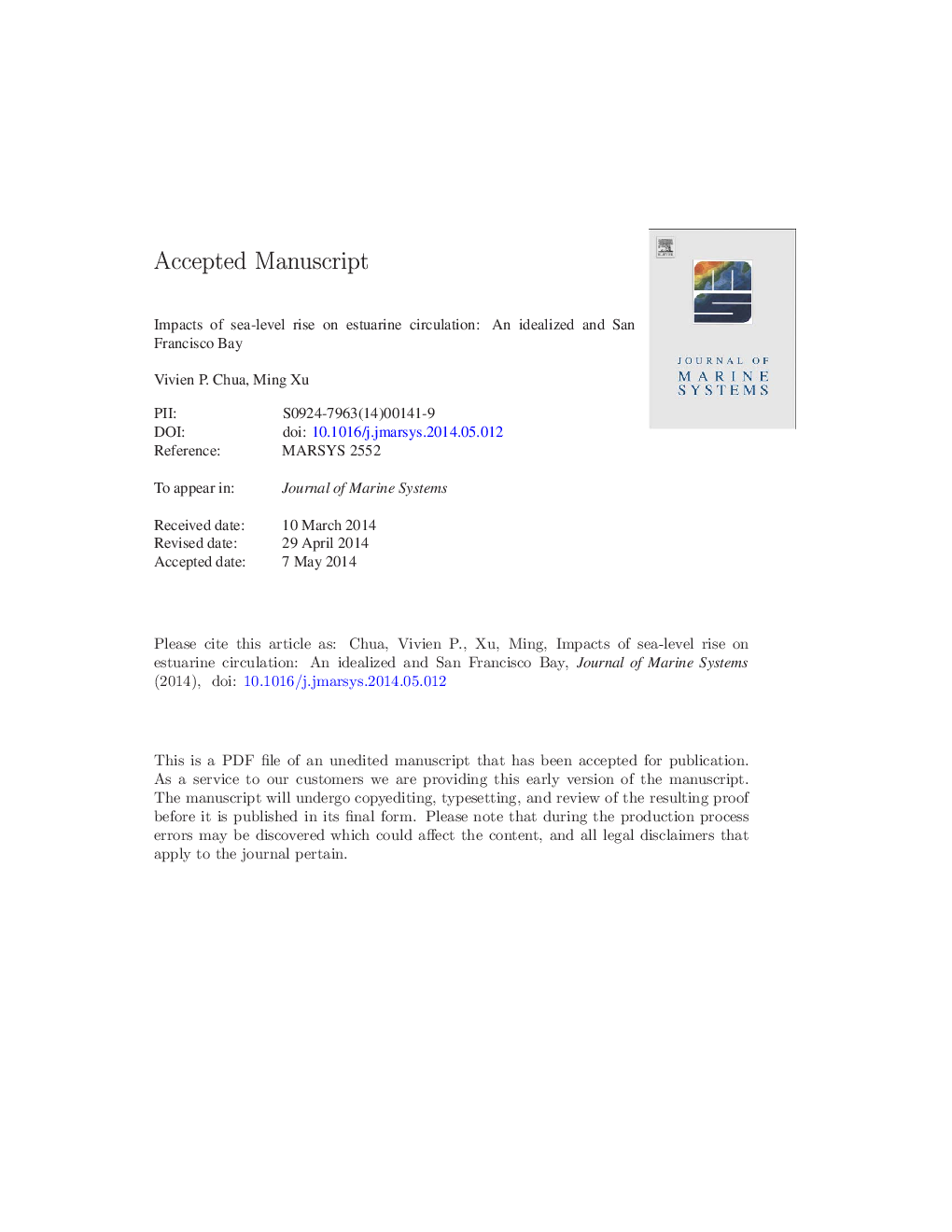| Article ID | Journal | Published Year | Pages | File Type |
|---|---|---|---|---|
| 6386905 | Journal of Marine Systems | 2014 | 41 Pages |
Abstract
Estuaries lie at the interface of land and sea, and are particularly vulnerable to sea-level rise due to climate change that might lead to intrusion of salt water further upstream and affect circulation patterns. Climate change is also likely to have a major impact on hydrological cycles and consequently lead to changes in freshwater inflows into estuaries. An idealized estuary model is employed to investigate the effects of sea-level rise and freshwater inflows on estuarine circulation. Rising sea levels result in a stronger longitudinal salinity gradient âs/âx, indicating an increase in the strength of the gravitational circulation UGC, higher longitudinal dispersion coefficients K and enhanced salinity intrusion. Under low-flow conditions, the effects of sea level rise on salinity intrusion are largest because sea-level rise has a greater impact due to weaker vertical stratification. Strong flows increase the strength of the gravitational circulation, resulting in higher vertical stratification, which leads to the nonlinear feedback between vertical mixing and stratification. The effect of sea-level rise on salinity intrusion is reduced owing to the suppression of mixing by stratification. Supporting three-dimensional simulations from northern San Francisco Bay are presented. The intrusion length scale L is used as a substitute for regulating inflows to ensure that sufficient fresh water is available to flush the Bay. Following a set of standards explicitly stated in the 1994 Bay-Delta Accord, a series of simulations is performed and we find that with sea-level rise stronger inflows are required to maintain L at the proposed locations.
Related Topics
Physical Sciences and Engineering
Earth and Planetary Sciences
Oceanography
Authors
Vivien P. Chua, Ming Xu,
